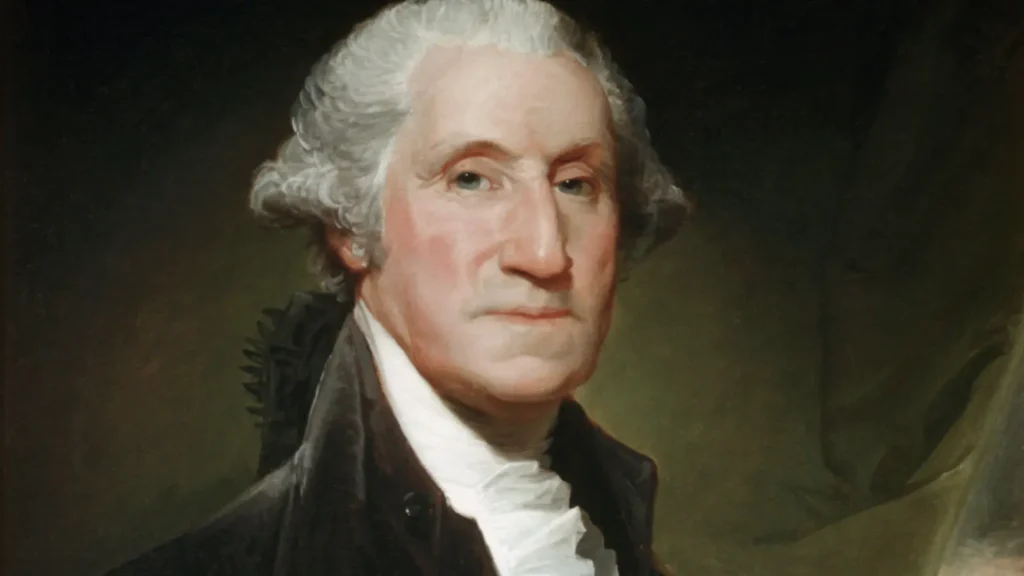George Washington stands proudly as a seminal Founding Father and pioneering leader who helped shape American democracy. Yet beneath his mythical legend lay some pervasive misunderstandings needing clarification for fully appreciating the context behind deeds.
This piece examines frequent assumptions modern audiences make about pivotal episodes in Washington’s life. By separating truth from widespread false impressions, we better comprehend his challenging realities, informed motivations, and visionary triumphs.
The Myth of the Wooden Teeth
Contrary to the popular wooden teeth image on Mt. Rushmore and old portraits, Washington never actually possessed wooden dentures.
He did, however, struggle with dental issues throughout adulthood, losing his first tooth at age 22. Ill-fitting dentures later plagued Washington’s public speaking. But his painstaking custom sets built by D.C. dentists used materials like gold, ivory, and human/animal teeth fused by wires to wooden bases, not solid wood chunks, which would splinter quickly. This distinction highlights improved scientific understanding today.
The Truth About His Birthplace
Many associate Washington with Mt. Vernon, his beloved Virginian community. But George actually spent his earliest years at his parents’ Pope’s Creek tobacco farm located south of modern day Colonial Beach before relocating to Ferry Farm near Fredericksburg as a boy.
Historic records verify Washington’s birth site as the Pope’s Creek homestead on February 22, 1732, based on the Julian calendar used then. Colonial Virginia farming landscapes shaped Washington’s formative experiences before he inherited Mt. Vernon decades later at maturity.
Washington and the Cherry Tree Story
The fable of a young Washington cutting his father’s cherry tree with his gifted hatchet and then nobly admitting the deed when questioned remains firmly fictional yet enduringly iconic.
The anecdote never surfaced until appearing in an 1806 biography by early American writer Mason Locke Weems. This image attempted to cement Washington’s reputation as a man defined by honor and honesty.
Still, the invented tale’s lasting imprint speaks towards a public yearning for larger-than-life leaders as ethical role models—especially those as instrumental as early President Washington.
Misunderstanding His Role in the Revolutionary War
Popular imagination frequently depicts Washington heroically leading troops into each major battle when actual records reveal a more judicious figure delegating wider military strategy to skilled Continental officers and advising from headquarters.
His excellence manifested more in uniting militias and inspiring men rather than assuming a typical generalship. This leadership gap emerged from Washington’s civilian background. But his willingness to listen to experienced war council peers helped greatly secure ultimate victory.
The Misconception of His Wealth
Although Washington possessed considerable land that later facilitated his political endeavors, many falsely assumed he inherited vast affluence early on.
In reality, his farming-focused revenue streams faced volatile climate impacts, global market whims, and labor shortages.
Many ledgers show years wavering between profit and loss trying to improve output through innovation. Reframing Washington as an entrepreneurial businessman before a career public servant permits fuller understanding behind certain choices advancing both personal and the young nation’s interests simultaneously later on.
Misconceptions About His Outfit
Contrary again to many modern depictions placing him in stereotypical regalia throughout the Revolutionary era, Washington prioritized functionality over pomp.
He deliberately traded ornamental braiding for streamlined buff and blue uniforms, allowing better mobility against British lines. It also helped him maintain an aura of respectability when interacting with local townsfolk and Continental Congress officials organizing supply requisitions.
Such strategic tailoring reveals Washington’s pragmatic commitment towards bolstering revolutionary efforts by leading disciplined examples. You can use Gensmo blog to get a better idea about the details of the popular George Washington outfit and how it differs from the common misconceptions.
The Myth of His Reluctance to Be President
Some accounts suggest Washington second-guessed his fitness to lead the newly founded nation as initial President given his lack of political credentials. But records show Washington made calculated efforts behind the scenes securing votes during Constitutional Convention negotiations.
His early awareness and eagerness for the executive position demonstrated a committed visionary sensing destiny’s calling to help America stabilize post-war by providing steady leadership. He wanted to honor the sacrifices already made for liberated democracy.
Washington’s Views on Slavery
We cannot examine Washington’s relationship with slavery without noting his embeddedness within prevalent Virginian plantation culture exploiting thousands for economic supremacy.
While Washington voiced wrestlings with the slavery institution’s moral hypocrisy privately through writings, he also purchased more slaves strengthening personal assets.
But nuance emerges via evidence that he allowed multiple manumissions through final will provisions. We must analyze Washington’s outlook through complex lenses, acknowledging societal realities inevitably limiting even founders’ social conscience development.
Conclusion
These common George Washington myths allow humanizing someone often literally placed on marble pedestals. But reframing iconography through factual clarity also elevates fuller appreciation of Washington’s accomplishments overcoming contemporary restrictions.
The National father figures stand for America’s mixed promise. Questioning assumptions about Washington’s character as well as choices that were not consistent permits pride in progress. It also provides responsibility for the work left to do toward unions that can be more perfect in the upcoming future.


